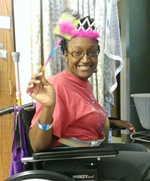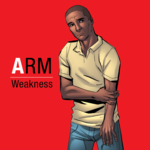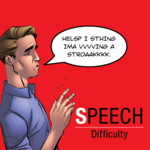by Myra Wilson, Stroke Survivor

On November 3, 2014, I was in nursing school working as a student nurse at a hospital in Seattle. My first sign that something was not quite right was when I was walking through the nursing station and both of my eyes went blurry. I could still see color but I couldn't see letters. It was blurry for about 30 seconds before clearing up again.
I was going to lunch and went to give a report to another nurse. The nurse noticed while I was speaking that I slurred my speech. I didn't notice my speech was slurred at all. It was at that time that I experienced a sudden sharp pain on the right side of my head. The nurse then expressed concern that I was having a stroke and called a code. I was told to sit in the nearby chair.
Within minutes a team of people arrived and evaluated me. Paralysis started to consume my left side, my dominant side. I had left-sided facial droop and I couldn't move my left arm or leg. They had to carry me to the stretcher.
I was taken to the emergency room where I underwent a CT scan to determine if it was hemorrhagic. Since it was not, they gave me a drug called tPA to help dissolve the clot.
I was transferred to another hospital where I underwent an angiogram and a thrombectomy in the cath lab. The angiogram showed a blood clot in a large artery in the right side of my brain. The thrombectomy entailed going through my femoral artery, and into my brain to remove the clot.
I spent a week in ICU followed by two weeks in rehab.
At 41 years old, I had to relearn how to walk, talk, and swallow.
Contrary to the more common causes of stroke, i.e. high blood pressure, high cholesterol, smoking, etc., my situation was quite different. After more than 12 weeks of testing, the doctors were finally able to pinpoint the cause as a rare autoimmune disorder called antiphospholipid syndrome.
As a nursing student, I've taken care of many patients who were stroke survivors. I never thought it would happen to me.
I continue to gain strength in my leg and arm. I have returned to work though I am unable to do my work as an orthopedic tech, I am able to contribute to the ortho team on projects that are not physically demanding.
The key message I want people to take away from my story is that stroke doesn't discriminate. Stroke affects people of all ages, ethnicity, professions, economic status, etc. Know the signs and get help immediately. Act F.A.S.T!
#
Learn how to spot a stroke F.A.S.T. at StrokeAssociation.org/StrokeHero
Myra Wilson is a volunteer for the American Heart Association/American Stroke Association in Seattle, WA.



